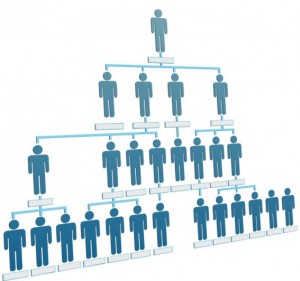In our MGT 598 class, while examining project management structures and discussing the related Moss and McAdams Accounting Firm case, I made some interesting observations. I would like to recap for the benefit of my readers the 3 main structures:
1) Functional Organization – where different segments of the project are delegated to respective functional units
2) Dedicated Project Team – which are teams that operate as separate units under the leadership of a full-time project manager
3) Matrix Organization – which has 2 chains of command (functional and project) and project participants report simultaneously to both functional and project managers.
In Gulf Petrochemical Industries Company (GPIC), where I work, I observed that we have all 3 types of structures for different purposes. The reason for having these different project structures, as proposed by our management, is to enhance our creativity. I personally believe that the more you are involved with activities that are not part of the realm of your expertise and responsibilities, the more links you can make among functions and projects.
We have a functional structure based on the various departments i.e. Finance, IT, Marketing, Operations, etc. This type is prevalent and will continue as long as we are in business.
In addition, we have dedicated project teams set up as the need arises for company-wide projects. I coordinated with section heads from every department in a team for the purpose of establishing a documented Segregation of Duties (SoD) Matrix. Also, I’ve taken charge of preparing and reviewing all tasks before our annual Information Security Management System (ISO) audit with staff from Management Systems.
Taking into account the above two structures that we have at GPIC, we have an overarching matrix organization structure where while having our functional roles and being part of dedicated teams, we must continuously report to both our functional managers as well as our project managers. For instance, during the SoD project, for matters related to segregating duties from an IT point of view, I had to report and take advice from my functional manager. However, for the management and coordination of the project, I had to report to our Financial Management Superintendent who was appointed as the project manager.
So how is project structure linked to creativity?
Creative industries looking to adopt formal project management methods have the make or buy options open to them, though either approach will only be successful if based upon a realistic strategy. There are creative project managers but many have a skills gap when it comes to talking about their approach to “formal” delivery. At best, there is a prescribed way of doing things based on the way we’ve always done things; at worst there is an incredulous response that says “you mean there’s an actual method to the madness!”
Successful Project Managers know that each project is a living, growing organism and it cannot be rigidly contained. Designers create real value for people through beautiful, effective design. Project Managers create value through effective integration of people’s skills. Its part art: Guiding the creativity and communication; and part science: Managing the hours and budgets.
What influence do you think the project structure has on its members’ creativity?
References:
http://www.arraspeople.co.uk/camel-blog/projectmanagement/project-management-in-the-creative-world/
